







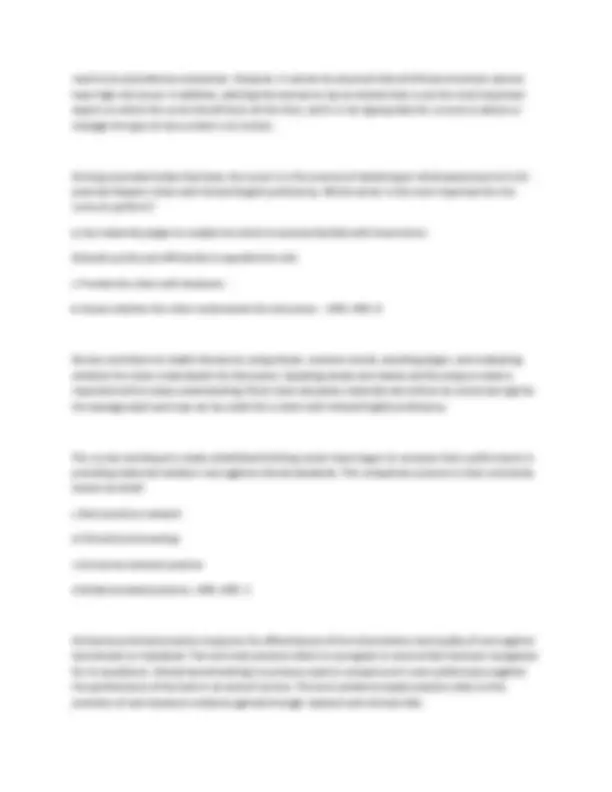


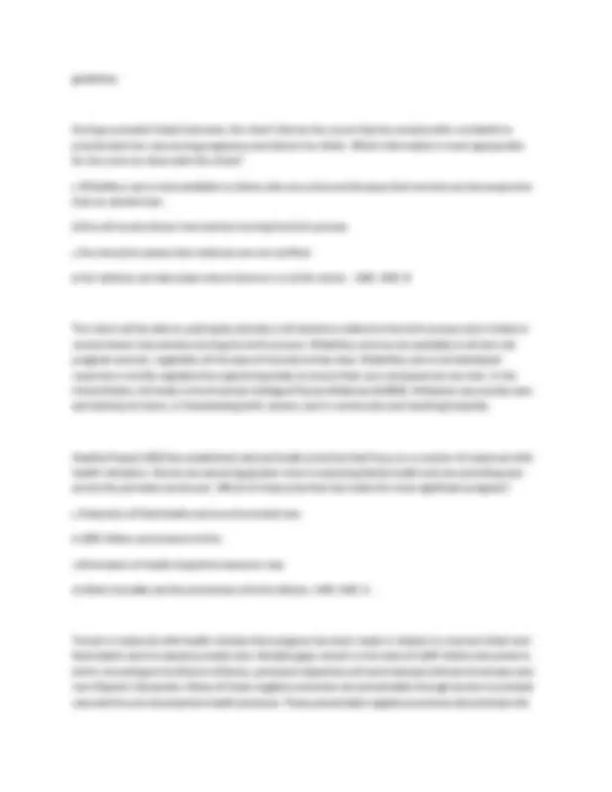
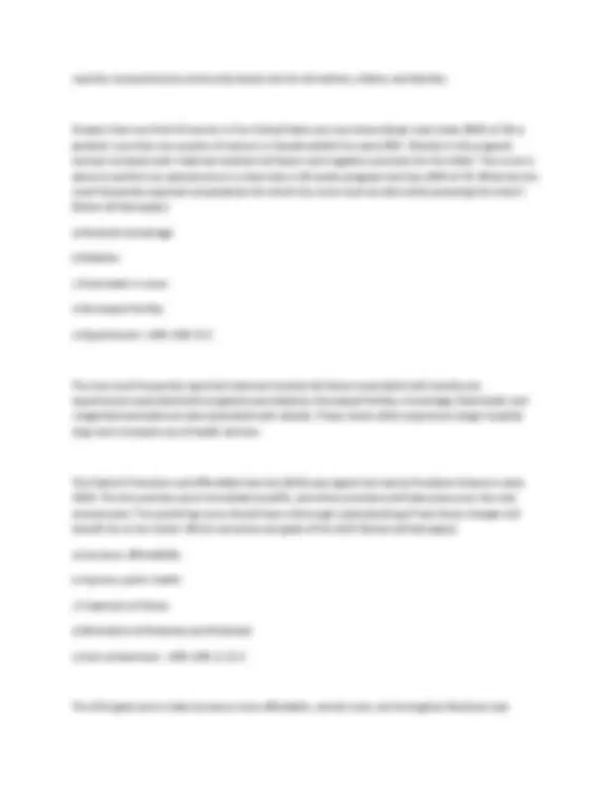
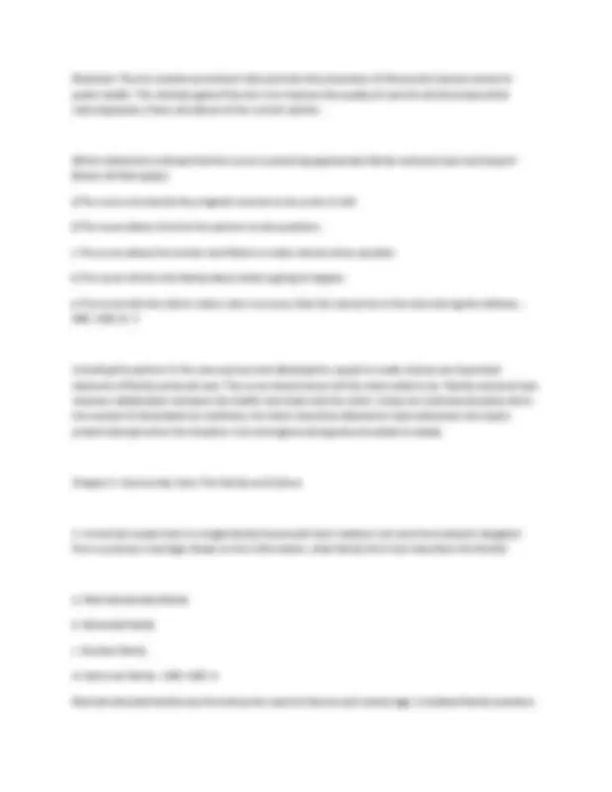
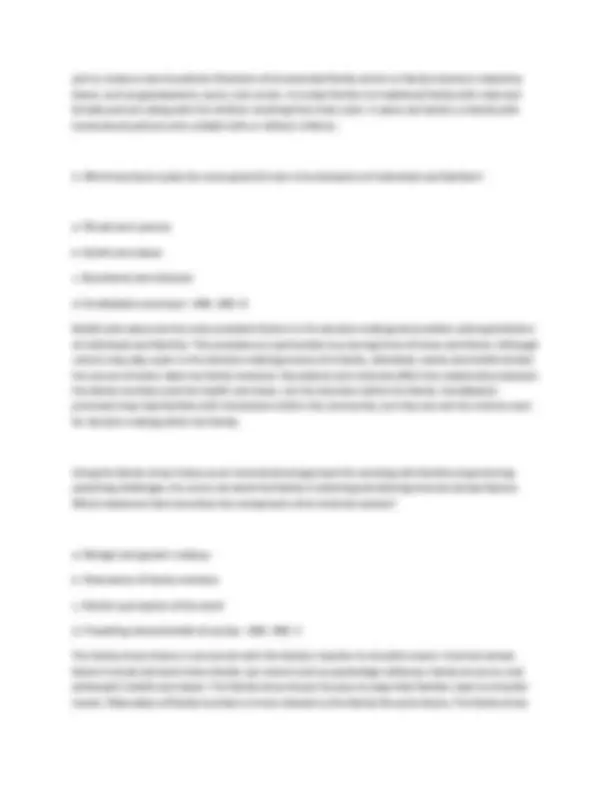







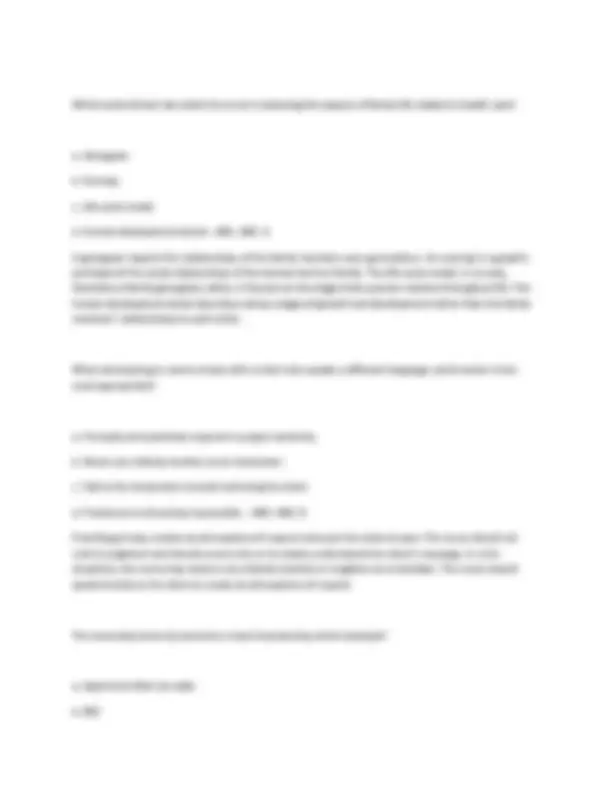

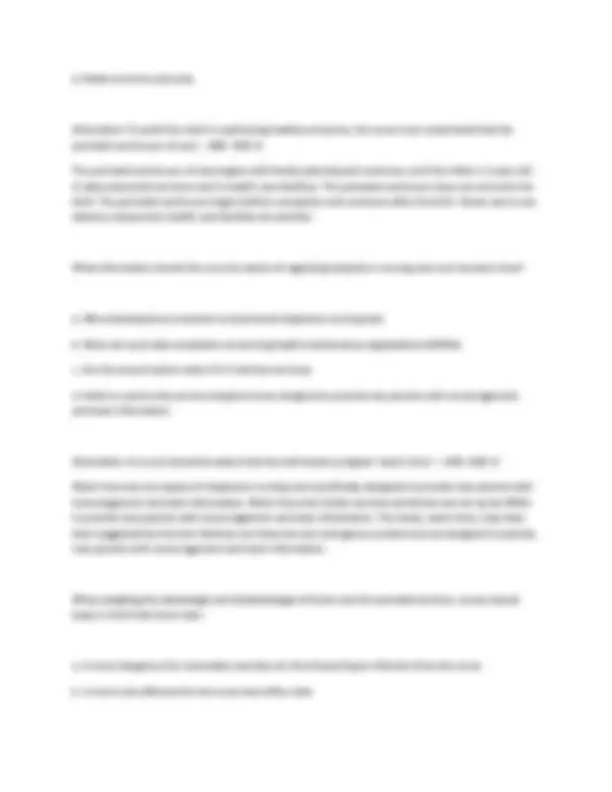

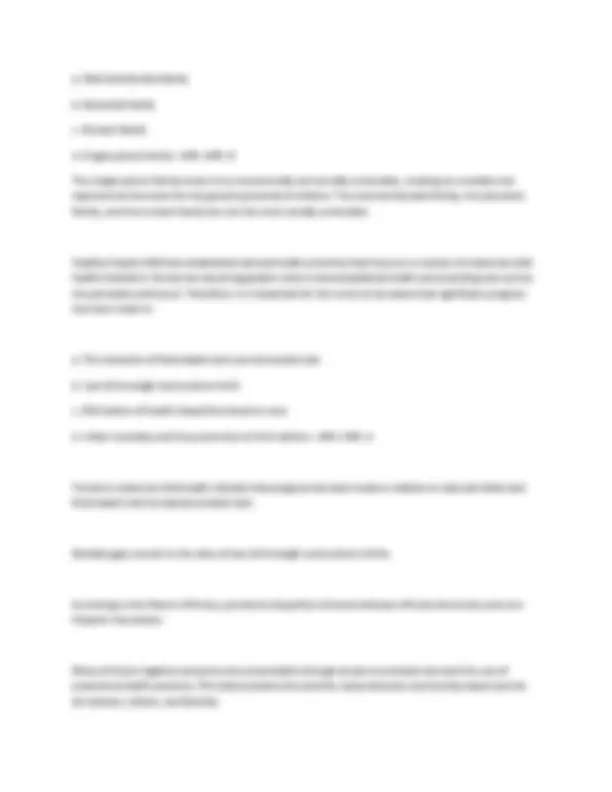

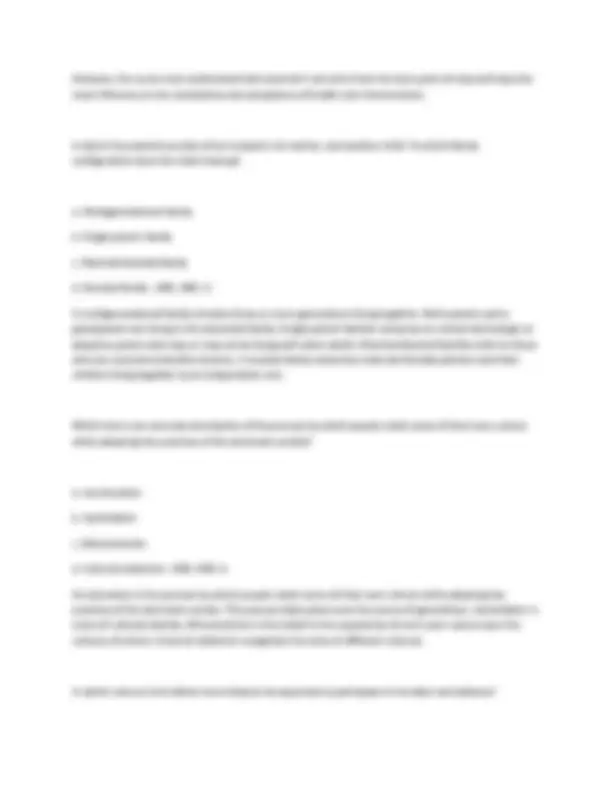
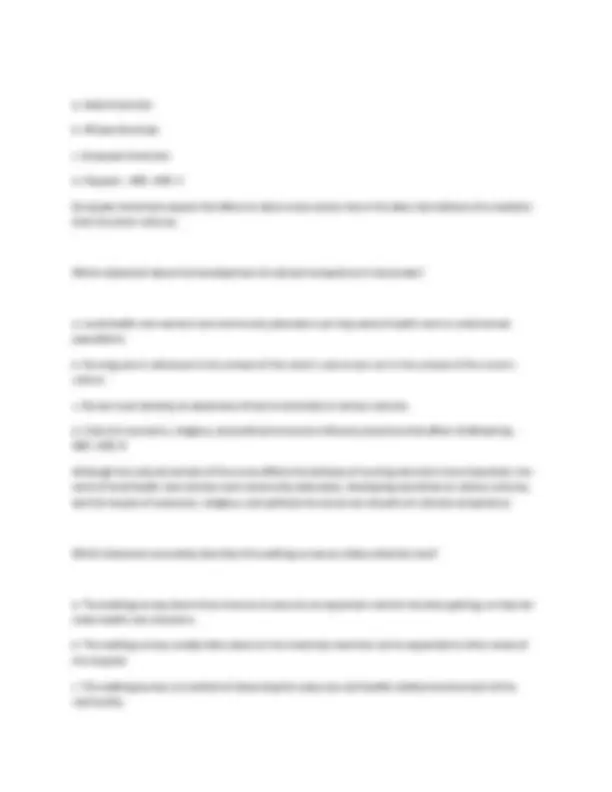
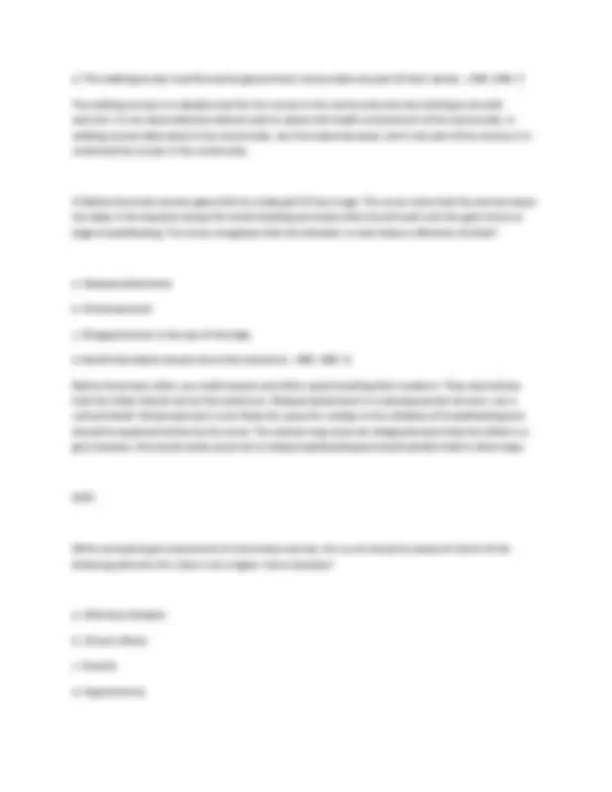



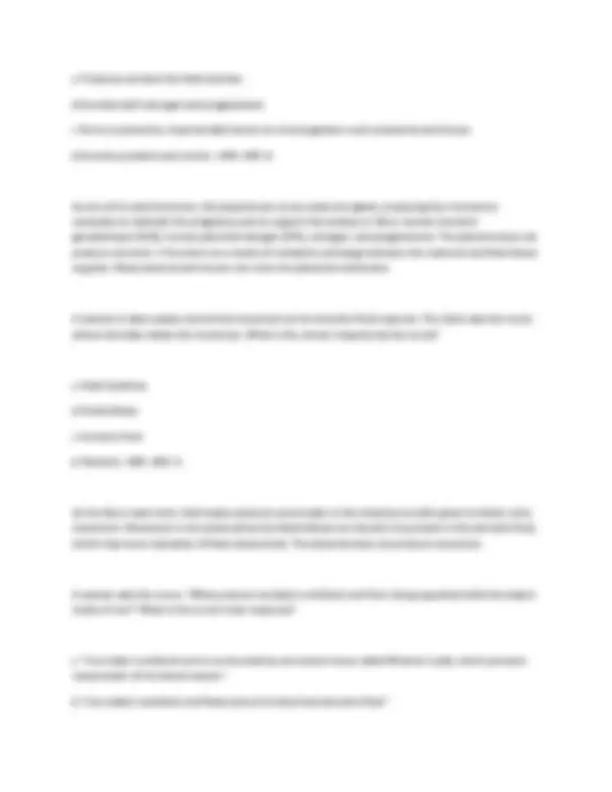
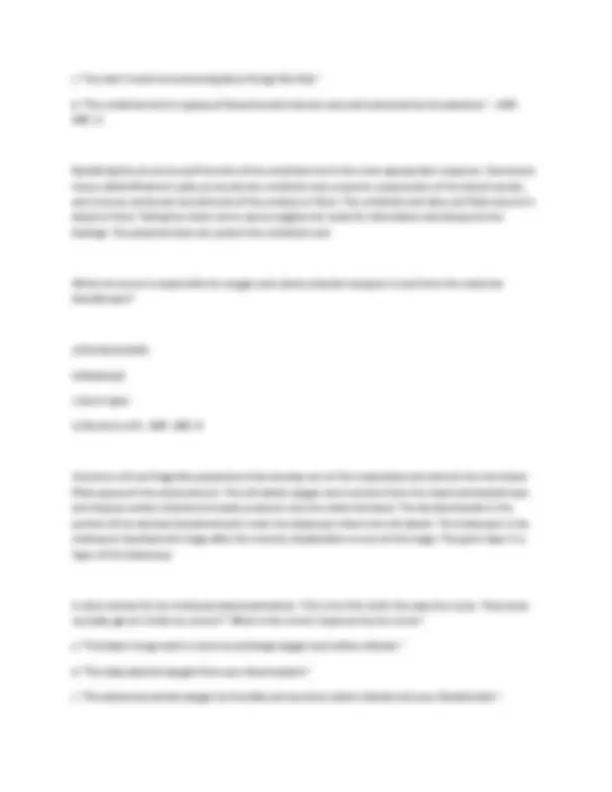

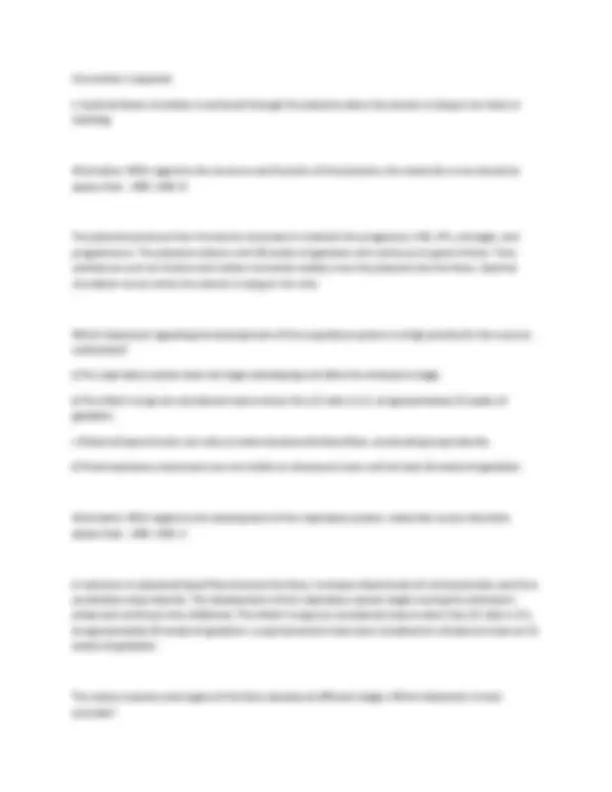

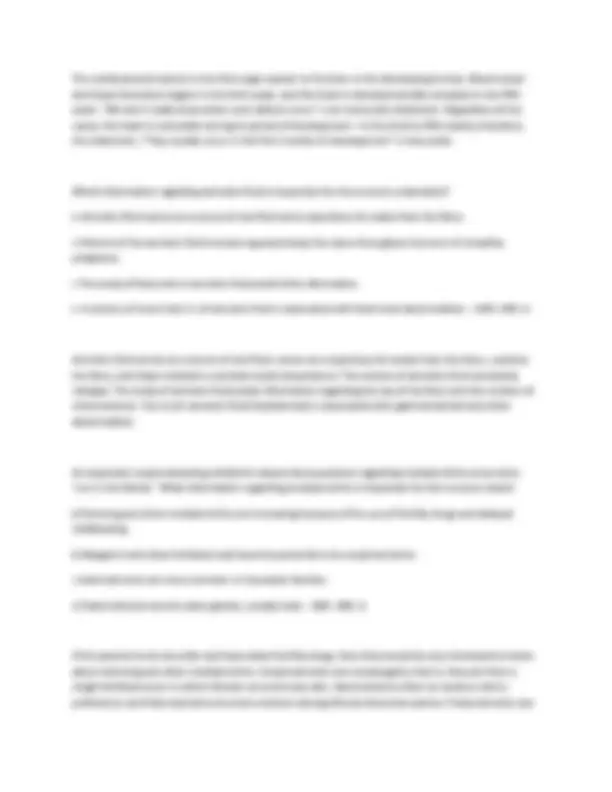

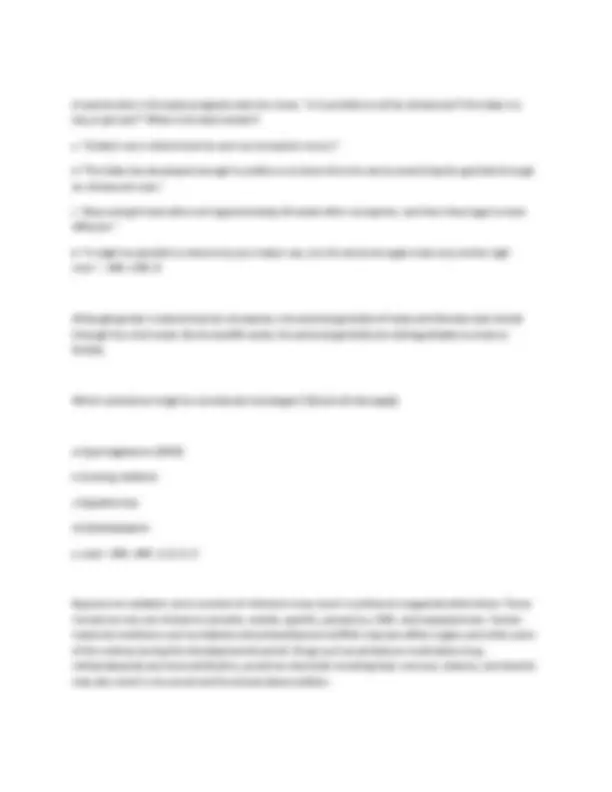
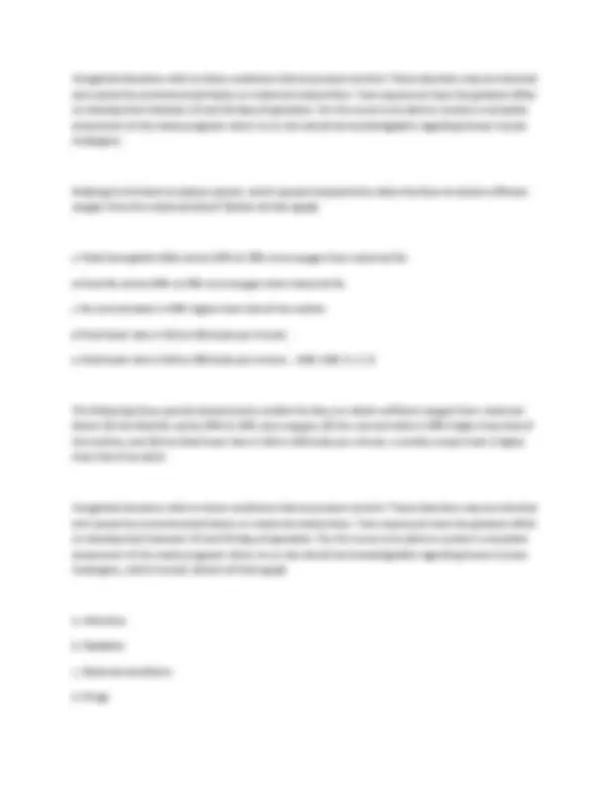


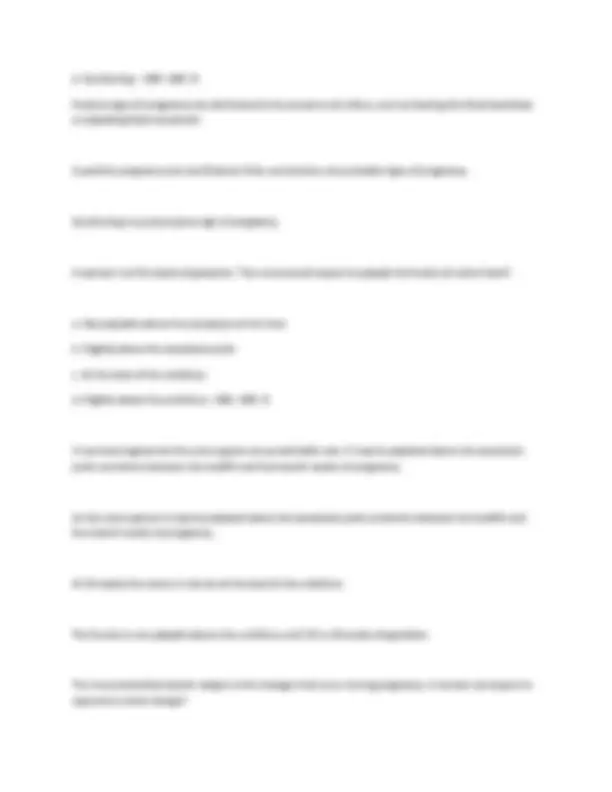
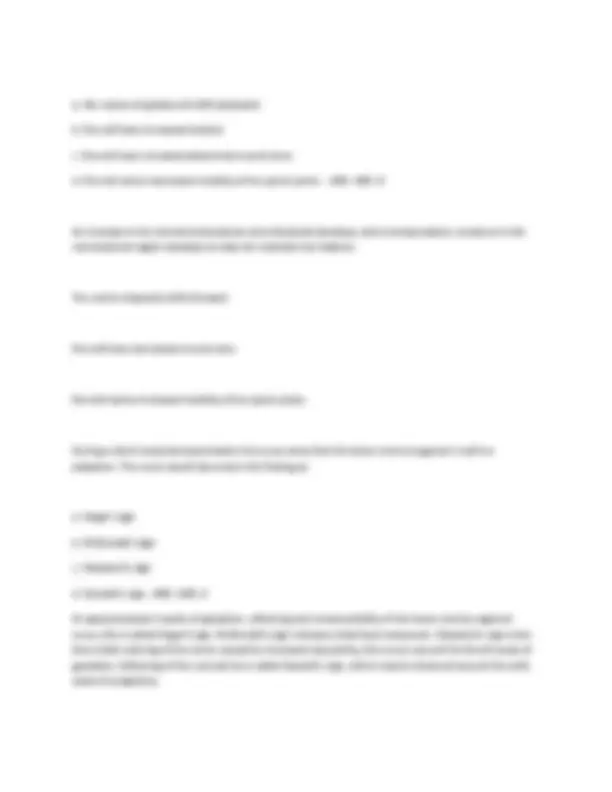
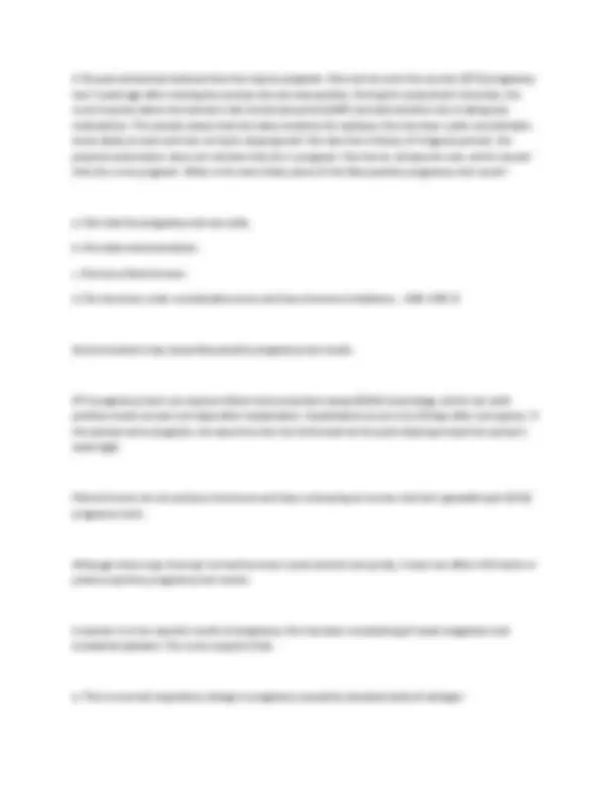
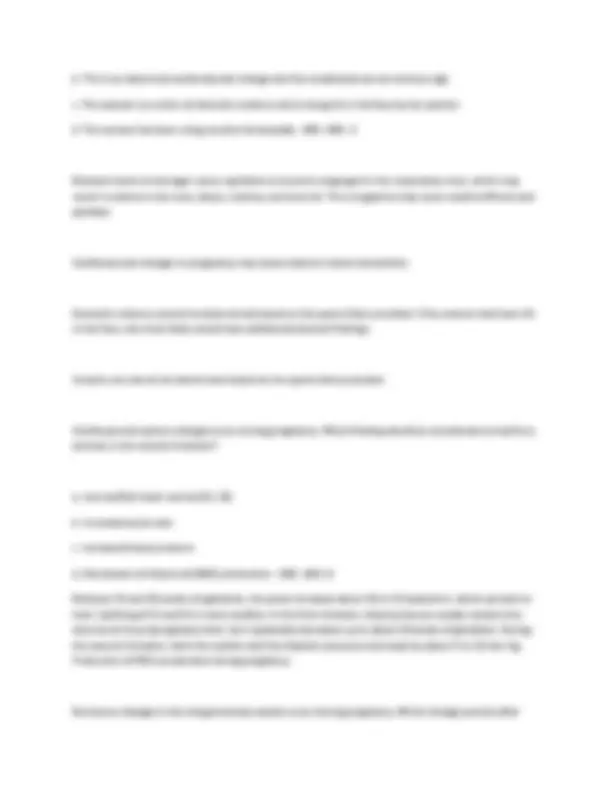
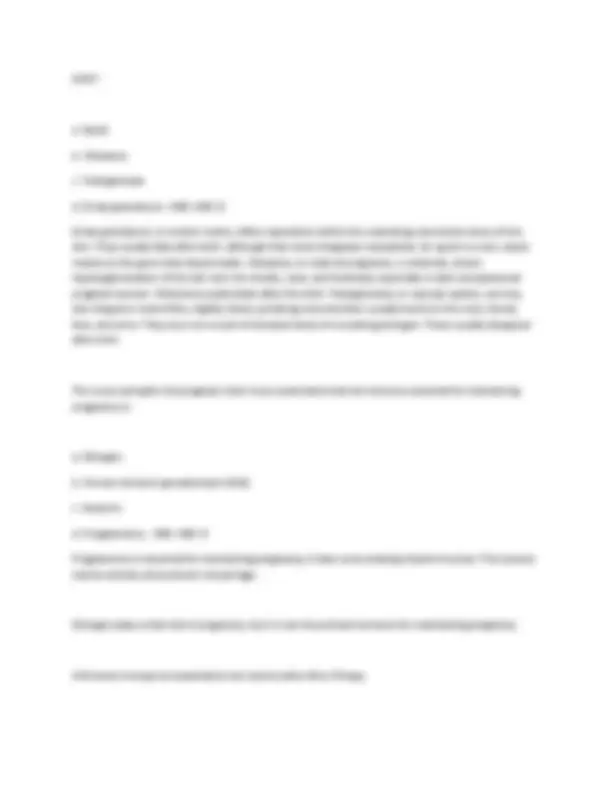





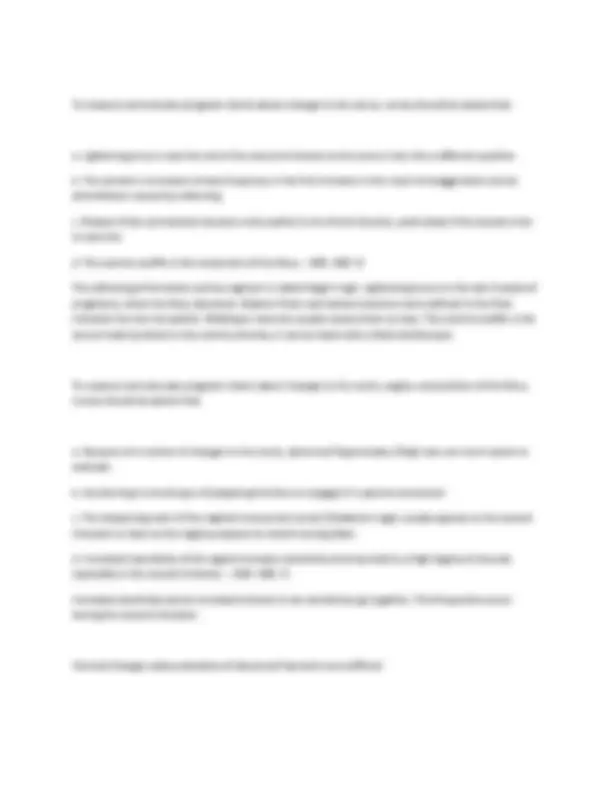

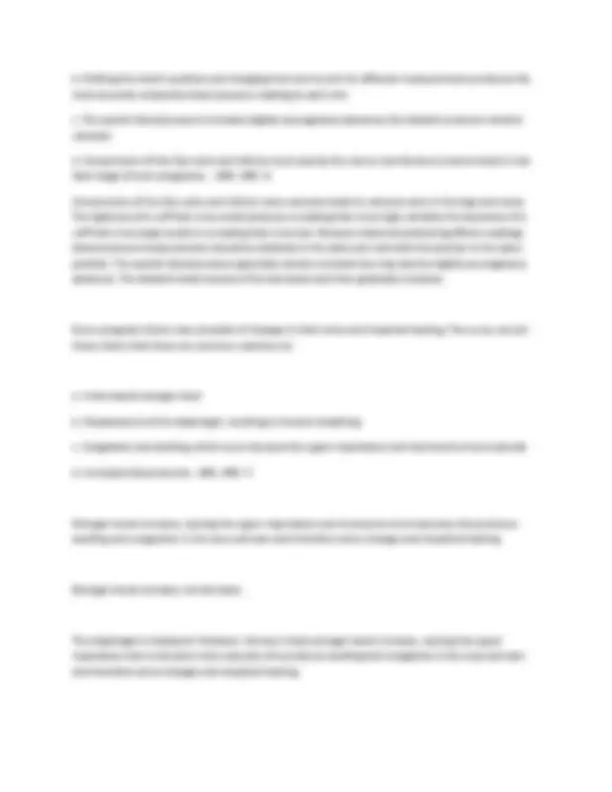
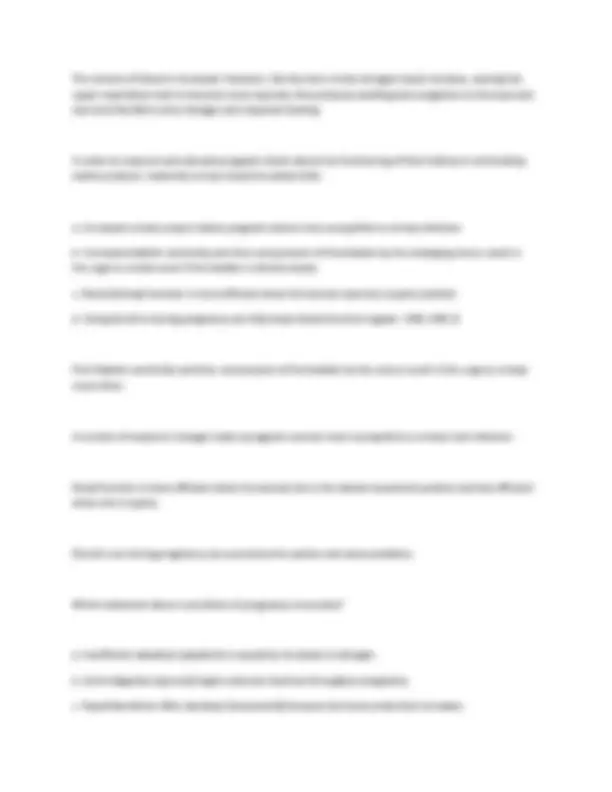
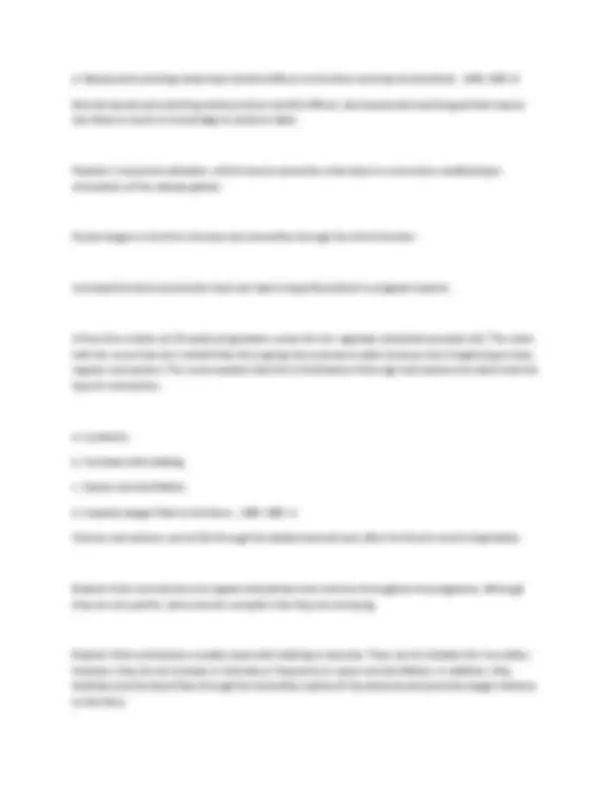


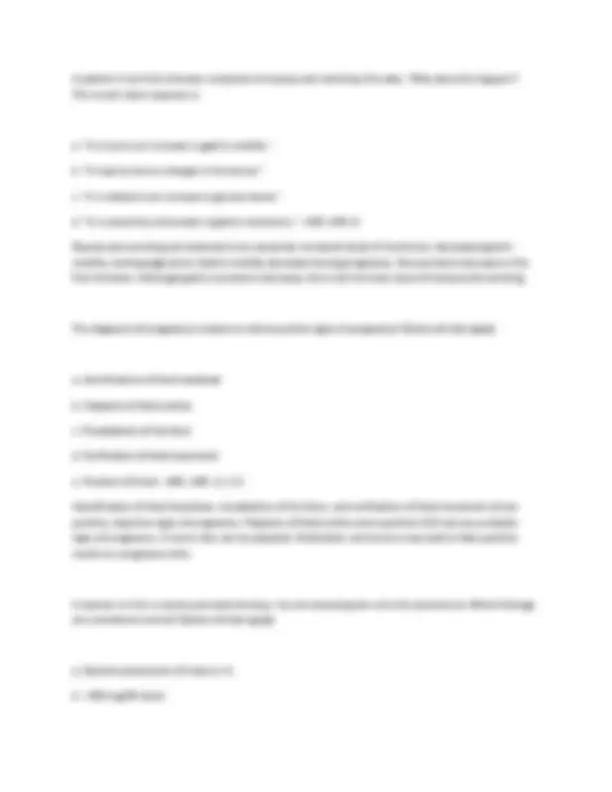
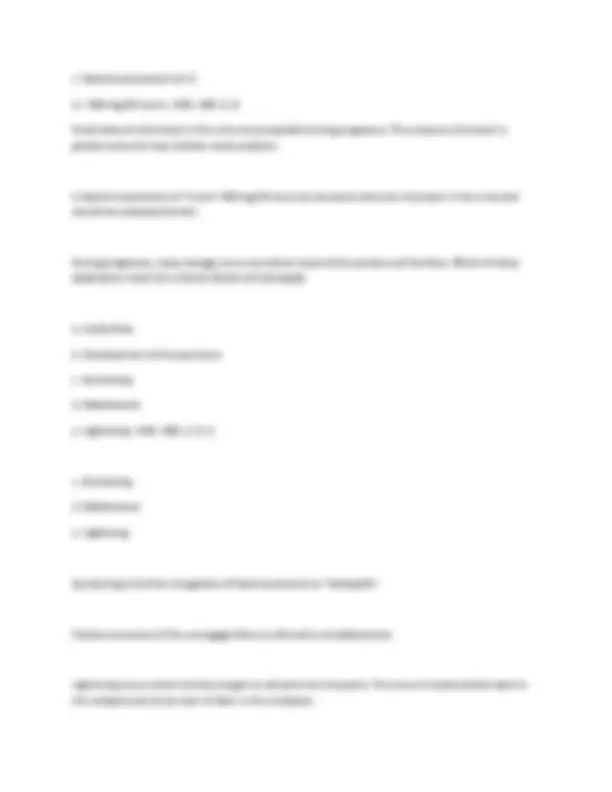

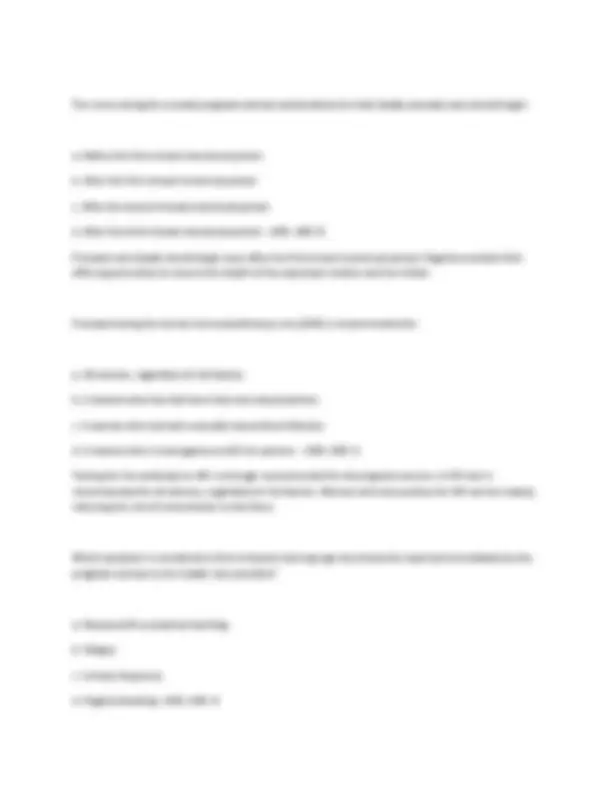
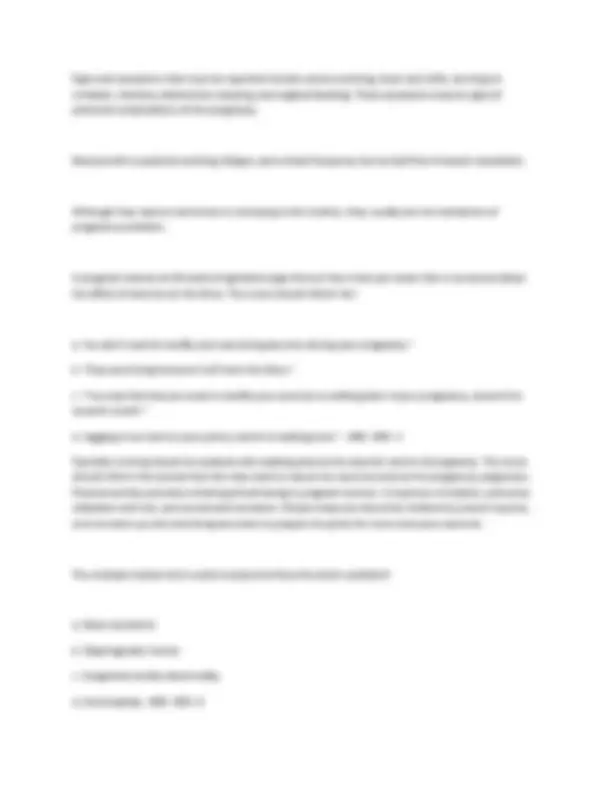
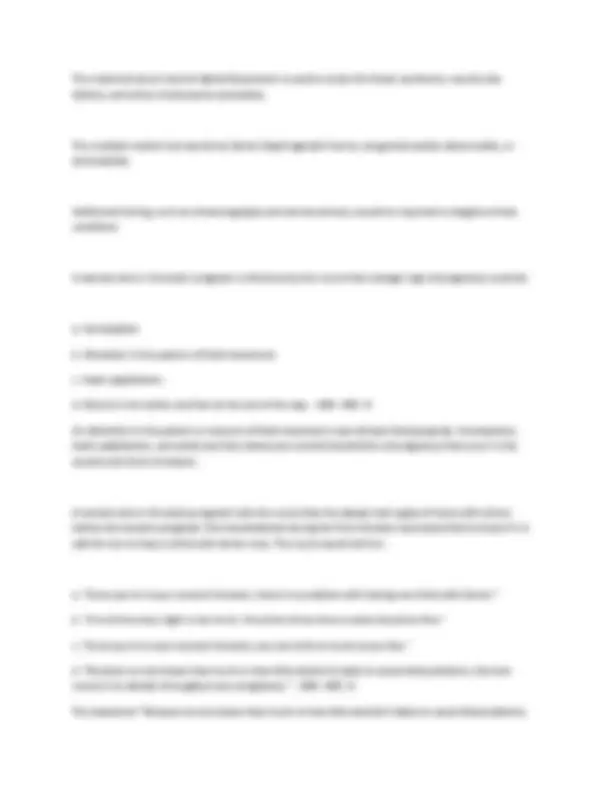
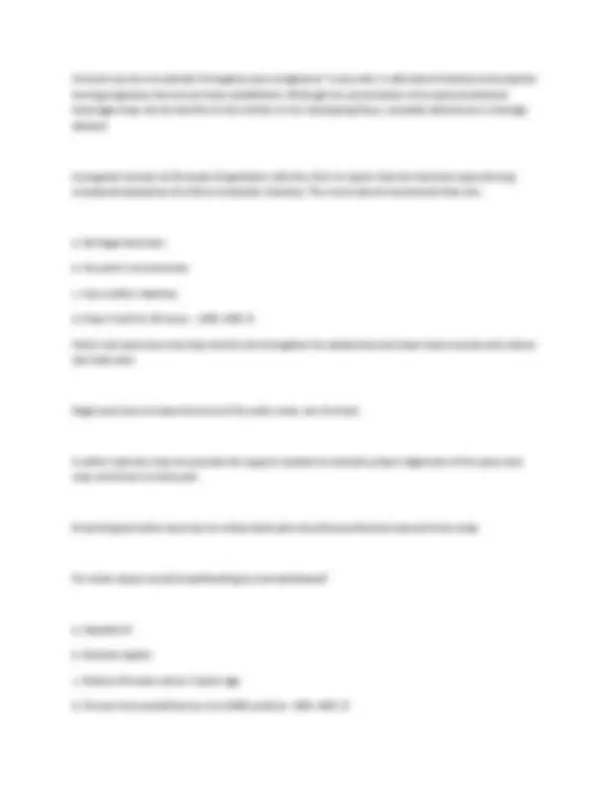
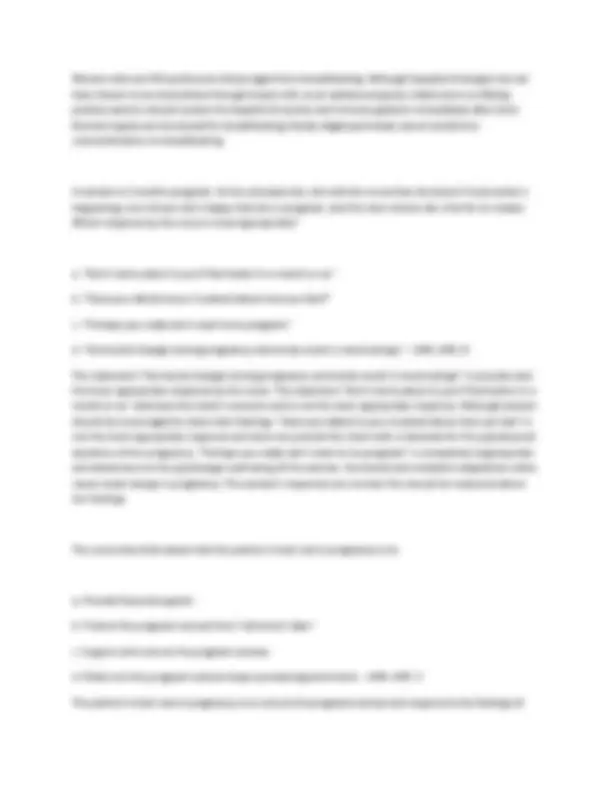

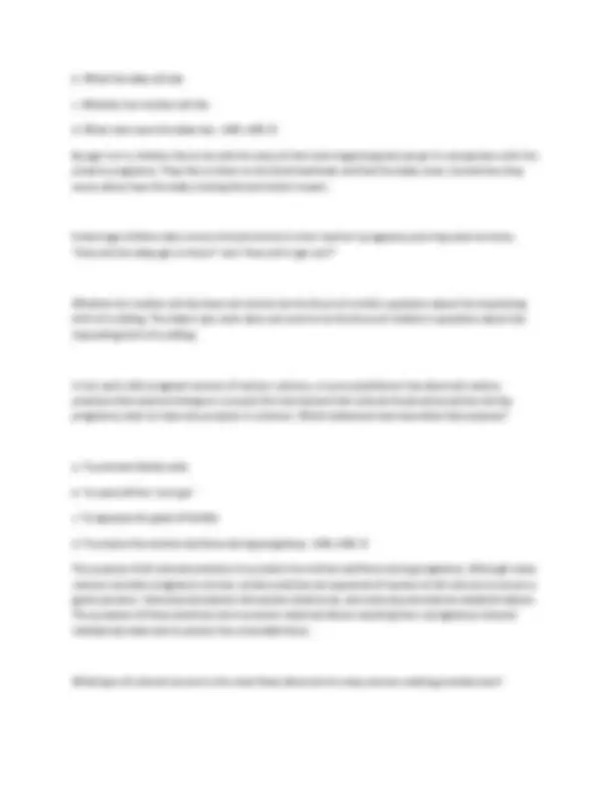


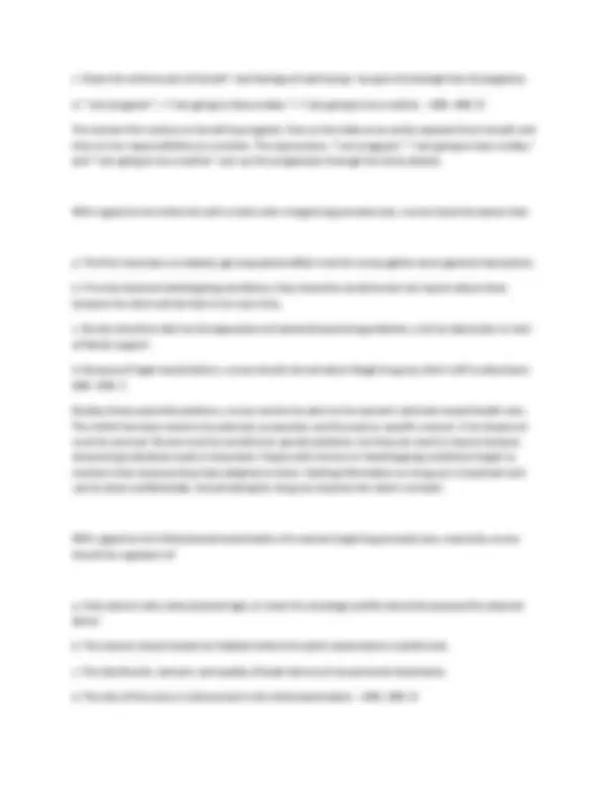

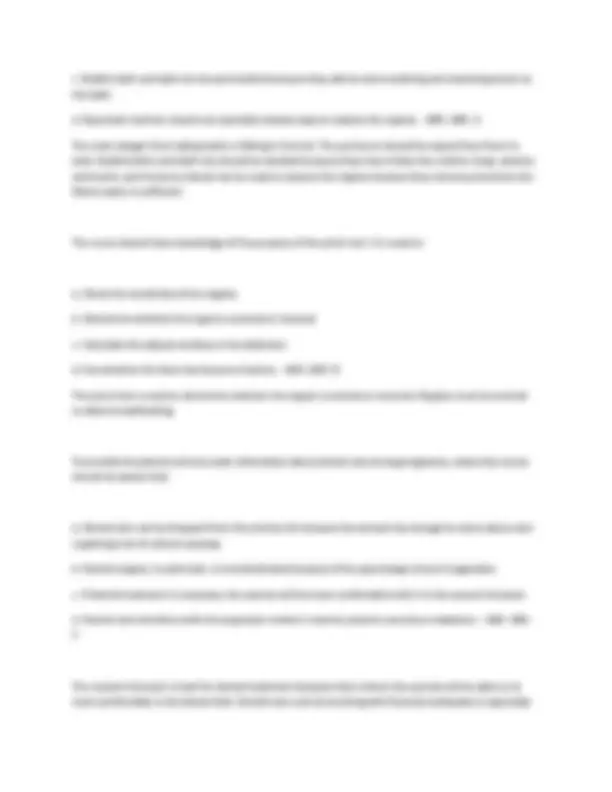


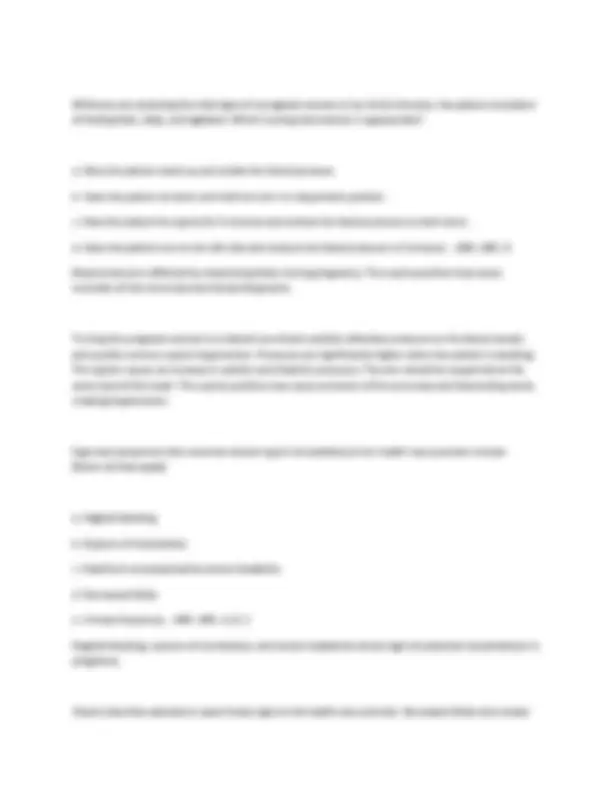



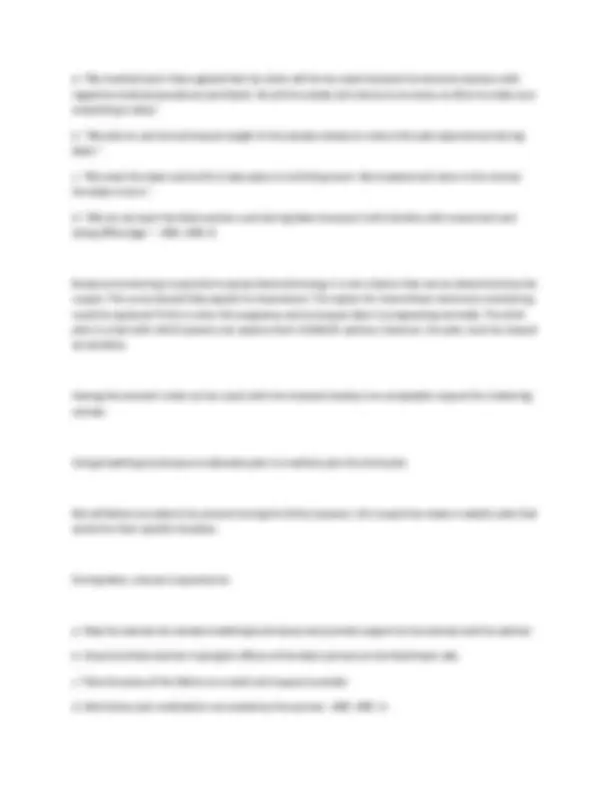


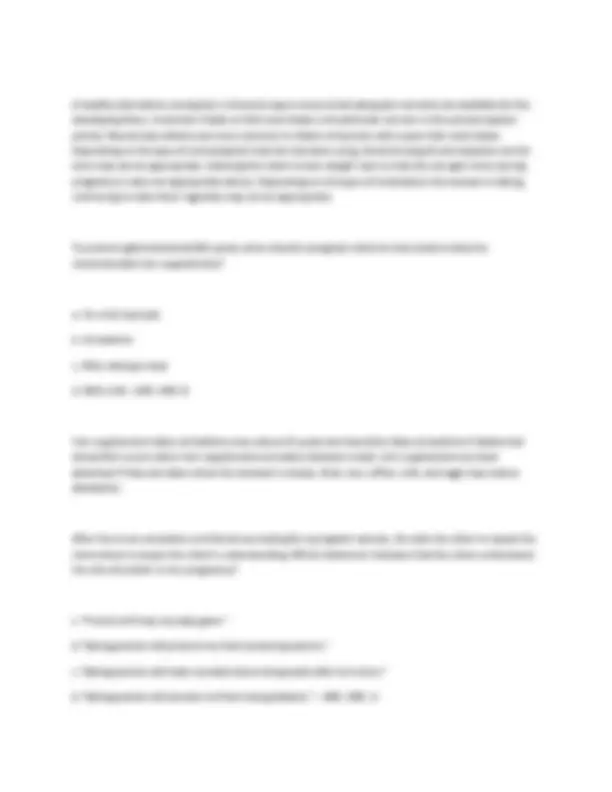
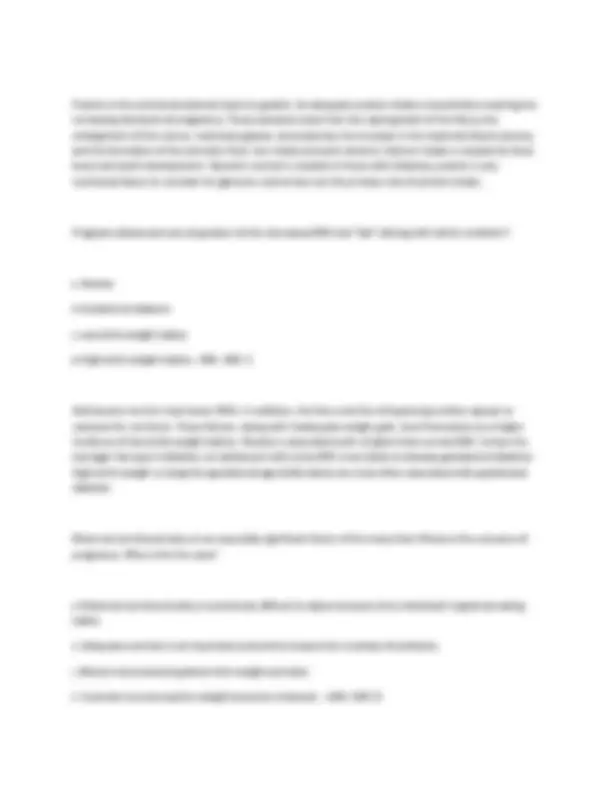
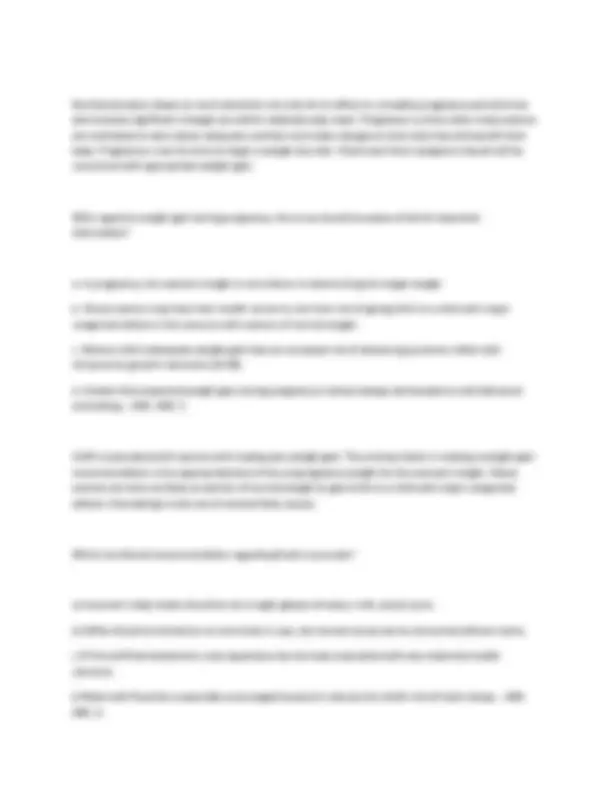

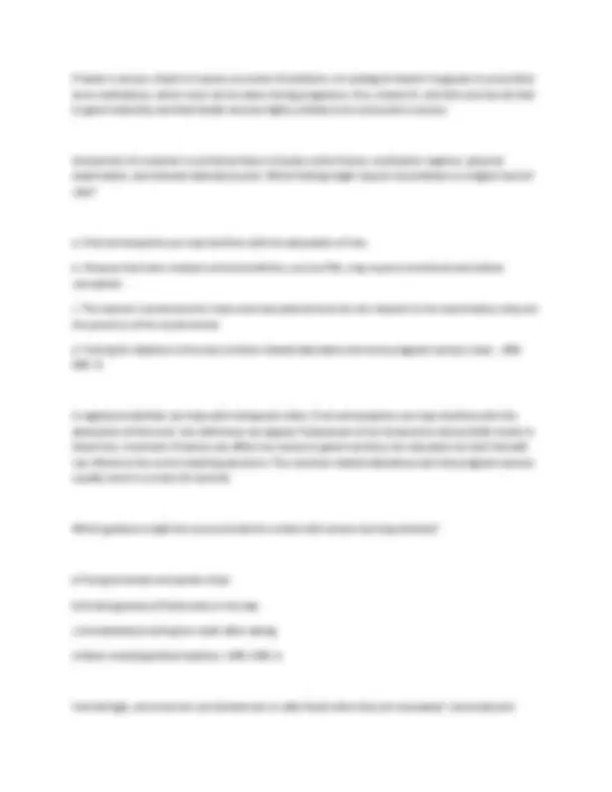
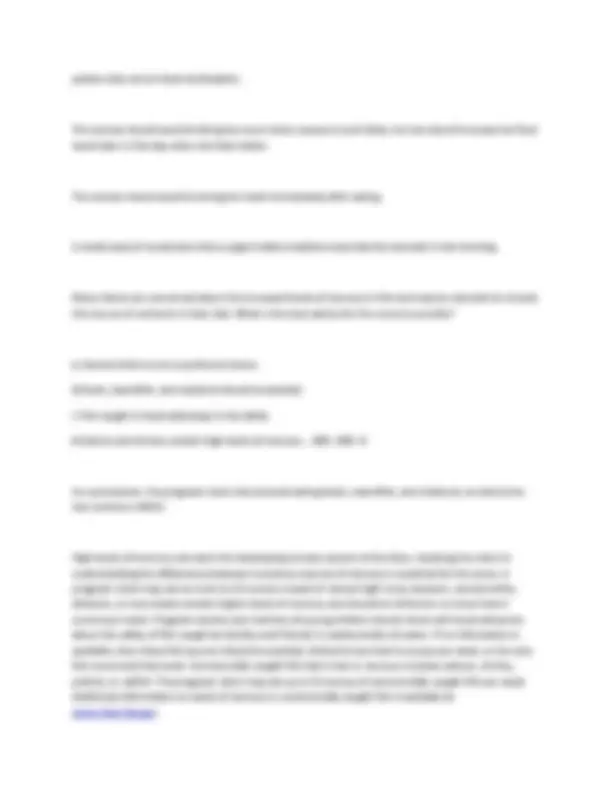



Study with the several resources on Docsity

Earn points by helping other students or get them with a premium plan


Prepare for your exams
Study with the several resources on Docsity

Earn points to download
Earn points by helping other students or get them with a premium plan
Community
Ask the community for help and clear up your study doubts
Discover the best universities in your country according to Docsity users
Free resources
Download our free guides on studying techniques, anxiety management strategies, and thesis advice from Docsity tutors
Maternity by Lowdermilk & Perry test bank 2024: Chapters 1-26 complete/Maternity by Lowdermilk & Perry test bank 2024: Chapters 1-26 complete/Maternity by Lowdermilk & Perry test bank 2024: Chapters 1-26 complete/Maternity by Lowdermilk & Perry test bank 2024: Chapters 1-26 complete/Maternity by Lowdermilk & Perry test bank 2024: Chapters 1-26 complete
Typology: Exams
1 / 119

This page cannot be seen from the preview
Don't miss anything!





























































































Chapter 01: 21st Century Maternity and Women's Health
a. African-American race
b. Cigarette smoking
c. Poor nutritional status
d. Limited maternal education - ANS- ANS: A
For African-American births, the incidence of LBW infants is twice that of Caucasian births. Race is a nonmodifiable risk factor.
Cigarette smoking is an important factor in potential infant mortality rates, but it is not the most important. Additionally, smoking is a modifiable risk factor.
Poor nutrition is an important factor in potential infant mortality rates, but it is not the most important. Additionally, nutritional status is a modifiable risk factor.
Maternal education is an important factor in potential infant mortality rates, but it is not the most important. Additionally, maternal education is a modifiable risk factor.
a.Designing research studies
b.Collecting data for other researchers
c.Identifying researchable problems
d.Seeking funding to support research studies - ANS- ANS: C
When problems are identified, research can be properly conducted. Research of health care issues leads to evidence-based practice guidelines. Designing research studies is only one factor of the research process. Data collection is another factor of research. Financial support is necessary to conduct research, but it is not the primary role of the nurse in the research process.
a. Incidence of specific infections, such as acquired immunodeficiency syndrome (AIDS) and tuberculosis
b. Infant mortality rate
c. Maternal morbidity rate
d. Incidence of low-birth-weight (LBW) infants - ANS- ANS: B
City, county, and state health departments provide annual reports of births and deaths. Maternal and infant death rates are particularly important because they reflect health outcomes that may be preventable. Infant mortality continues to be a concern in all populations.
AIDS and tuberculosis may be the target of research studies; however, maternal and infant mortality rates are particularly important in the evaluation of the health of a population.
The number of maternal deaths in the United States is small; however, worldwide many women die each year from problems related to pregnancy and childbirth.
The incidence of LBW infants is monitored in order to determine risk factors such as racial disparity. It is not as widely used as infant mortality.
Outcomes-oriented care measures effectiveness of interventions and quality of care against benchmarks or standards.
The term best practice refers to a program or service that has been recognized for excellence.
Clinical benchmarking is a process used to compare one's own performance against the performance of the best in an area of service.
The term evidence-based practice refers to the provision of care based on evidence gained through research and clinical trials.
a. The use of midwives for all vaginal deliveries
b. Family-centered care
c. Free-standing birth clinics
d. Physician-driven care - ANS- ANS: B
Contemporary maternity nursing focuses on the family's needs and desires.
Midwives and physicians both perform vaginal deliveries.
Free-standing clinics are an example of alternative birth options.
Contemporary maternity nursing is driven by the relationship between nurses and their clients.
hours. The baby died 3 days later from sepsis. On what grounds could the woman have a legitimate legal case for negligence?
a. She is Hispanic.
b. She delivered a girl.
c. If the standards of care were not met.
d. She refused fetal monitoring. - ANS- ANS: C
Not meeting the standards of care is a legitimate factor for a case of negligence.
The client's race is not a factor for a case of negligence.
The infant's gender is not a factor for a case of negligence.
Although fetal monitoring is the standard of care, the client has the right to refuse treatment. This refusal is not a case for negligence, but informed consent should be properly obtained, and the client should sign an against medical advice form for refusal of any treatment that is within the standard of care
a. Infant discharged to the wrong person
b. Kernicterus associated with failure to identify and treat hyperbilirubinemia
c. Artificial insemination with wrong donor sperm or egg
d. Foreign object retained after surgery - ANS- ANS: D
Although a foreign object retained after surgery is a never event, this does not pertain specifically to obstetric clients. A client undergoing any type of surgery may be at risk for this event.
c. Cigarette smoking among pregnant women continues to increase.
d. The rates of pregnancy and abortion among teens are lower in the United States than in any other industrialized country. - ANS- ANS: A
Low-birth-weight infants and preterm birth are more likely because of the large number of teenagers in the unmarried group.
Birth rates for women in their early 40s continue to increase.
Fewer pregnant women smoke.
Teen pregnancy and abortion rates are higher in the United States than in any other industrial country.
a. Early postpartum discharge policies
b. Midwifery care
c. The involvement of nurses in the politics of cost containment
d. An emphasis on the use of advanced technology in care - ANS- ANS: D
The use of advanced technology in care increases costs. Caring for the increased number of low-birth- weight infants in neonatal intensive care unit (NICU) settings contributes significantly to increased health care costs.
Early discharges reduce costs.
Midwifery care reduces costs.
Involvement of nurses should ameliorate costs.
a. Derived from the Nursing Intervention Classification
b. Known as evidence-based practice
c. At odds with the Cochrane School of traditional nursing
d. An outgrowth of telemedicine - ANS- ANS: B
Evidence-based practice is based on knowledge gained from research and clinical trials.
The Nursing Intervention Classification is a method of standardizing language and categorizing care.
Dr. Cochrane systematically reviewed research trials and is part of the evidence-based practice movement.
Telemedicine uses communication technologies to support health care.
a. The standard of care
b. Risk management
c. A sentinel event
d. Failure to rescue - ANS- ANS: A
Midwives can provide care and delivery at home, in freestanding birth centers, and in community and teaching hospitals.
a. "This is a very abnormal practice and rarely seen in the United States."
b. "Are you aware of who performed this so that it can be reported to the authorities?"
c. "We will be able to fully restore your circumcision after delivery."
d. "The extent of your circumcision will affect the potential for complications." - ANS- ANS: D
The extent of the circumcision is important. The client may experience pain, bleeding, scarring, or infection and may require surgery prior to childbirth.
Although this practice is not prevalent in the United States, it is very common in many African and Middle Eastern countries for religious reasons. Mentioning that the practice is abnormal and rarely seen in the United States is culturally insensitive.
The infibulation may have occurred during infancy or childhood. The client will have little to no recollection of the event. She would have considered this to be a normal milestone during her growth and development.
The International Council of Nurses has spoken out against this procedure as harmful to a woman's health.
a. q.o.d. or Q.O.D
b. MSO4 or MgSO
c. International Unit
d. Lack of a leading zero - ANS- ANS: C
I.U. and i.u. are no longer acceptable because they could be misread as "I.V." or the number 10.
Q.O.D. should be written out as "every other day." The period after the "Q" could be mistaken for an "I" and the "o" could also be mistaken for an "i."
It is too easy to confuse one medication for another. These medications are used for very different purposes and could put a client at risk for an adverse outcome. They should be written as morphine sulfate andmagnesium sulfate.
The decimal point should never be missed before a number, to avoid confusion; i.e., 0.4 rather than .4. A leading zero is the preferred term.
a. Situation, Background, Assessment, Recommendation
b. Situation, Baseline, Assessment, Recommendation
c. Subjective, Background, Analysis, Recommendation
d. Subjective, Background, Analysis, Review - ANS- ANS: A
SBAR is an easy to remember, useful, concrete mechanism for communicating important information that requires a clinician's immediate attention.
Baseline is not discussed as part of SBAR.
e. Provide job training. - ANS- ANS: A, B, C, D
Lack of transportation to visits, lack of child care, access to skilled obstetric providers, and lack of affordable health insurance are prohibitive factors associated with lack of prenatal care.
Although job training may result in employment and income, the likelihood of significant changes during the time frame of the pregnancy is remote.
As a result of the increasing multicultural U.S. population, there is an urgent need to address health literacy as a component of culturally and linguistically competent care. Health care providers contribute to health literacy by using simple common words, avoiding jargon, and developing appropriate written materials.
A 23-year-old African-American woman is pregnant with her first child. Based on the statistics for infant mortality, which plan is most important for the nurse to implement?
a. Perform a nutrition assessment.
b. Refer the woman to a social worker.
c. Advise the woman to see an obstetrician, not a midwife.
d. Explain to the woman the importance of keeping her prenatal care appointments. - ANS- ANS: D
Consistent prenatal care is the best method of preventing or controlling risk factors associated with infant mortality. Nutritional status is an important modifiable risk factor, but it is not the most important action a nurse should take in this situation. The client may need assistance from a social worker at some time during her pregnancy, but a referral to a social worker is not the most important aspect the nurse should address at this time. If the woman has identifiable high-risk problems, then her health care may
need to be provided by a physician. However, it cannot be assumed that all African-American women have high-risk issues. In addition, advising the woman to see an obstetrician is not the most important aspect on which the nurse should focus at this time, and it is not appropriate for a nurse to advise or manage the type of care a client is to receive.
During a prenatal intake interview, the nurse is in the process of obtaining an initial assessment of a 21- year-old Hispanic client with limited English proficiency. Which action is the most important for the nurse to perform?
a. Use maternity jargon to enable the client to become familiar with these terms.
b. Speak quickly and efficiently to expedite the visit.
c. Provide the client with handouts.
d. Assess whether the client understands the discussion. - ANS- ANS: D
Nurses contribute to health literacy by using simple, common words, avoiding jargon, and evaluating whether the client understands the discussion. Speaking slowly and clearly and focusing on what is important will increase understanding. Most client education materials are written at a level too high for the average adult and may not be useful for a client with limited English proficiency.
The nurses working at a newly established birthing center have begun to compare their performance in providing maternal-newborn care against clinical standards. This comparison process is most commonly known as what?
a. Best practices network
b. Clinical benchmarking
c.Outcomes-oriented practice
d.Evidence-based practice - ANS- ANS: C
Outcomes-oriented practice measures the effectiveness of the interventions and quality of care against benchmarks or standards. The term best practice refers to a program or service that has been recognized for its excellence. Clinical benchmarking is a process used to compare one's own performance against the performance of the best in an area of service. The term evidence-based practice refers to the provision of care based on evidence gained through research and clinical trials.
a. Ask another nurse.
b. Discuss the procedure with the client's physician.
c. Look up the procedure in a nursing textbook.
d. Consult the agency procedure manual, and follow the guidelines for the procedure. - ANS- ANS: D
Following the agency's policies and procedures manual is always best when seeking information on correct client procedures. These policies should reflect the current standards of care and the individual state's guidelines. Each nurse is responsible for his or her own practice. Relying on another nurse may not always be a safe practice. Each nurse is obligated to follow the standards of care for safe client care delivery. Physicians are responsible for their own client care activity. Nurses may follow safe orders from physicians, but they are also responsible for the activities that they, as nurses, are to carry out. Information provided in a nursing textbook is basic information for general knowledge. Furthermore, the information in a textbook may not reflect the current standard of care or the individual state or hospital policies.
The National Quality Forum has issued a list of "never events" specifically pertaining to maternal and child health. These include all of the following except:
a. infant discharged to the wrong person.
b. kernicterus associated with the failure to identify and treat hyperbilirubinemia.
c.artificial insemination with the wrong donor sperm or egg.
d.foreign object retained after surgery. - ANS- ANS: D
Although a foreign object retained after surgery is a never event, it does not specifically pertain to obstetric clients. A client undergoing any type of surgery may be at risk for this event. An infant discharged to the wrong person specifically pertains to postpartum care. Death or serious disability as a result of kernicterus pertains to newborn assessment and care. Artificial insemination affects families seeking care for infertility.
A nurse caring for a pregnant client should be aware that the U.S. birth rate shows what trend?
a. Births to unmarried women are more likely to have less favorable outcomes.
b. Birth rates for women 40 to 44 years of age are declining.
c. Cigarette smoking among pregnant women continues to increase.
d. Rates of pregnancy and abortion among teenagers are lower in the United States than in any other industrialized country. - ANS- ANS: A
LBW infants and preterm births are more likely because of the large number of teenagers in the unmarried group. Birth rates for women in their early 40s continue to increase. Fewer pregnant women smoke. Teen pregnancy and abortion rates are higher in the United States than in any other industrial country.
A recently graduated nurse is attempting to understand the reason for increasing health care spending in the United States. Which information gathered from her research best explains the rationale for these higher costs compared with other developed countries?
a. Higher rate of obesity among pregnant women
b. Limited access to technology
c. Increased use of health care services along with lower prices
d.Homogeneity of the population - ANS- ANS: A
Health care is one of the fastest growing sectors of the U.S. economy. Currently, 17.4% of the gross domestic product is spent on health care. Higher spending in the United States, as compared with 12 other industrialized countries, is related to higher prices and readily accessible technology along with greater obesity rates among women. More than one third of women in the United States are obese. In the population in the United States, 16% are uninsured and have limited access to health care. Maternal morbidity and mortality are directly related to racial disparities.
Which statement best describes maternity nursing care that is based on knowledge gained through research and clinical trials?
a. Maternity nursing care is derived from the Nursing Intervention Classification.
b.Maternity nursing care is known as evidence-based practice.
c.Maternity nursing care is at odds with the Cochrane School of traditional nursing.
d.Maternity nursing care is an outgrowth of telemedicine. - ANS- ANS: B
guidelines.
During a prenatal intake interview, the client informs the nurse that she would prefer a midwife to provide both her care during pregnancy and deliver her infant. Which information is most appropriate for the nurse to share with this client?
a. Midwifery care is only available to clients who are uninsured because their services are less expensive than an obstetrician.
b. She will receive fewer interventions during the birth process.
c. She should be aware that midwives are not certified.
d. Her delivery can take place only at home or in a birth center. - ANS- ANS: B
This client will be able to participate actively in all decisions related to the birth process and is likely to receive fewer interventions during the birth process. Midwifery services are available to all low-risk pregnant women, regardless of the type of insurance they have. Midwifery care in all developed countries is strictly regulated by a governing body to ensure that core competencies are met. In the United States, this body is the American College of Nurse-Midwives (ACNM). Midwives can provide care and delivery at home, in freestanding birth centers, and in community and teaching hospitals.
Healthy People 2020 has established national health priorities that focus on a number of maternal-child health indicators. Nurses are assuming greater roles in assessing family health and are providing care across the perinatal continuum. Which of these priorities has made the most significant progress?
a. Reduction of fetal deaths and use of prenatal care
b.LBW infants and preterm births
c.Elimination of health disparities based on race
d.Infant mortality and the prevention of birth defects - ANS- ANS: A
Trends in maternal child health indicate that progress has been made in relation to reduced infant and fetal deaths and increased prenatal care. Notable gaps remain in the rates of LBW infants and preterm births. According to the March of Dimes, persistent disparities still exist between African-Americans and non-Hispanic Caucasians. Many of these negative outcomes are preventable through access to prenatal care and the use of preventive health practices. These preventable negative outcomes demonstrate the
need for comprehensive community-based care for all mothers, infants, and families.
Greater than one third of women in the United States are now obese (body mass index [BMI] of 30 or greater). Less than one quarter of women in Canada exhibit the same BMI. Obesity in the pregnant woman increases both maternal medical risk factors and negative outcomes for the infant. The nurse is about to perform an assessment on a client who is 28 weeks pregnant and has a BMI of 35. What are the most frequently reported complications for which the nurse must be alert while assessing this client? (Select all that apply.)
a.Potential miscarriage
b.Diabetes
c.Fetal death in utero
d.Decreased fertility
e.Hypertension - ANS- ANS: B, E
The two most frequently reported maternal medical risk factors associated with obesity are hypertension associated with pregnancy and diabetes. Decreased fertility, miscarriage, fetal death, and congenital anomalies are also associated with obesity. These clients often experience longer hospital stays and increased use of health services.
The Patient Protection and Affordable Care Act (ACA) was signed into law by President Obama in early
a.Insurance affordability
b.Improve public health
c.Treatment of illness
d.Elimination of Medicare and Medicaid
e.Cost containment - ANS- ANS: A, B, E
The ACA goals are to make insurance more affordable, contain costs, and strengthen Medicare and